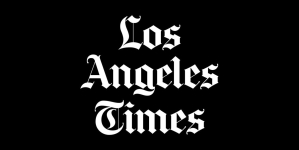-
Chinese Hackers Are Exploiting Flaws in Widely Used Software, Microsoft Says - 49 mins ago
-
Beloved peacocks reported stolen from historic California hotel - 1 day ago
-
Judge Sentences Ex-Officer in Breonna Taylor Raid to Nearly 3 Years in Prison - 1 day ago
-
Dozens Are Killed at Aid Site Near Border, Gaza Health Officials Say - July 20, 2025
-
30 hurt when car slams into crowd in Hollywood - July 19, 2025
-
Astronomer CEO Andy Byron Placed on Leave After Video at Coldplay Concert Exposes Alleged Affair - July 19, 2025
-
Blood in the Streets and Death in the Air: Residents Survey Damage in Syrian City - July 17, 2025
-
Army vet calls for investigation after being detained for three days in ICE raid - July 17, 2025
-
Tariffs Push Up Prices, and the Supreme Court’s ‘Shadow Docket’ - July 16, 2025
-
ICE arrested her selling tamales at Lowes. Then she suffered a heart attack. ‘I told them: I can’t breathe’ - July 14, 2025
What the Chevron Ruling Means for the Federal Government
The Supreme Court’s decision on Friday to limit the broad regulatory authority of federal agencies could lead to the elimination or weakening of thousands of rules on the environment, health care, worker protection, food and drug safety, telecommunications, the financial sector and more.
The decision is a major victory in a decades-long campaign by conservative activists to shrink the power of the federal government, limiting the reach and authority of what those activists call “the administrative state.”
The court’s opinion could make it easier for opponents of federal regulations to challenge them in court, prompting a rush of new litigation, while also injecting uncertainty into businesses and industries.
“If Americans are worried about their drinking water, their health, their retirement account, discrimination on the job, if they fly on a plane, drive a car, if they go outside and breathe the air — all of these day-to-day activities are run through a massive universe of federal agency regulations,” said Lisa Heinzerling, an expert in administrative law at Georgetown University. “And this decision now means that more of those regulations could be struck down by the courts.”
The decision effectively ends a legal precedent known as “Chevron deference,” after a 1984 Supreme Court ruling. That decision held that when Congress passes a law that lacks specificity, courts must give wide leeway to decisions made by the federal agencies charged with implementing that law. The theory was that scientists, economists and other specialists at the agencies have more expertise than judges in determining regulations and that the executive branch is also more accountable to voters.
Since then, thousands of legal decisions have relied on the Chevron doctrine when challenges have been made to regulations stemming from laws like the 1938 Fair Labor Standards Act, the 1970 Clean Air Act, the 2010 Affordable Care Act and others.
In writing laws, Congress has frequently used open-ended directives, such as “ensuring the rule is in the public interest,” leaving it to agency experts to write rules to limit toxic smog, ensure that health plans cover basic medical services, ensure the safety of drugs and cosmetics and protect consumers from risky corporate financial behavior.
But that gave too much power to unelected government officials, according to conservatives, who ran a coordinated, multiyear campaign to end the Chevron doctrine. They believe the courts, not administrative agencies, should have the power to interpret statutes. The effort was led by Republican attorneys general, conservative legal activists and their funders, several with ties to large corporations, and supporters of former President Donald J. Trump.
“Overturning Chevron was a shared goal of the conservative movement and the Trump administration. It was expressed constantly,” said Mandy Gunasekara, who served as chief of staff at the E.P.A. under President Trump and has helped write Project 2025, a policy blueprint for a next Republican administration. “It creates a massive opportunity for these regulations to be challenged. And it could galvanize additional momentum toward reining in the administrative state writ large if the administration changes in November.”
Still, Jonathan Berry, who served as a senior Labor Department official under Mr. Trump, noted that overturning the Chevron doctrine itself “doesn’t immediately blow anything up.”
Rather, Mr. Berry said, the fate of the regulations will be determined by what happens when they start moving through the courts without the protection of Chevron. “The mystery is exactly how much of this stuff goes down,” Mr. Berry said.
Here is a look at how the decision might affect various government agencies.
The Environmental Protection Agency
Environmentalists fear that the end of the Chevron doctrine will mean the elimination of hundreds of E.P.A. rules aimed at limiting air and water pollution, protecting people from toxic chemicals and, especially, tackling climate change.
Over the past six months, the Biden administration has issued the most ambitious rules in the country’s history aimed at cutting climate-warming pollution from cars, trucks, power plants and oil and gas wells. Without those rules, it would very likely be impossible for President Biden to achieve his goal of cutting greenhouse gas emissions in half by the end of the decade, which analysts say all major economies must do to avoid the most deadly and catastrophic impacts of global warming.
All of the Biden climate rules have already been the target of lawsuits that are winding their way through the courts.
Legal experts say that the reversal of Chevron will not remove E.P.A.’s foundational legal obligation to regulate climate-warming pollution: that was explicitly detailed in a 2007 Supreme Court decision and in 2022 legislation passed by Democrats in anticipation of challenges to that authority.
But the specific regulations — such those designed to cut car and truck pollution by accelerating the transition to electric vehicles, or to slash power plant pollution with the use of costly carbon capture and sequestration technology — could now be more legally vulnerable.
The result would quite likely be that stringent climate rules designed to sharply reduce emissions could be replaced by much looser rules that cut far less pollution. Experts say that could also be the fate of existing rules on smog, clean water and hazardous chemicals.
Labor Agencies
The elimination of the Chevron deference could affect workers in a variety of ways, making it harder for the government to enact workplace safety regulations and enforce minimum wage and overtime rules.
One recent example was in April, when the Biden administration raised the salary level below which salaried workers automatically become eligible for time-and-a-half overtime pay, to nearly $59,000 per year from about $35,000, beginning on Jan. 1. Business groups have challenged the Labor Department’s authority to set a so-called salary threshold, and such challenges will have far better odds of success without the Chevron precedent, experts said.
The shift could also rein in protections for workers who publicly challenge the policies of their employers, according to Charlotte Garden, a professor of labor law at the University of Minnesota. The National Labor Relations Board often concludes that a single worker has the right to protest low pay or harassment or attendance policies without being disciplined or fired. But the relevant law refers to “concerted activities,” meaning the protection may now apply only to groups of employees who stage such protests, not individuals, Professor Garden said.
Food and Drug Administration
The Food and Drug Administration flexes significant power when it sets the standards for how new drugs must be studied and whether they are safe and effective before they are approved for use. Attorneys who worked at the agency said that companies chafing at that high bar for approvals might now challenge those regulations. Others said legal challenges could ultimately affect drug prices.
Challenges are also expected in the tobacco division, which authorizes the sale of new cigarettes and e-cigarettes with the intent to protect public health. “I would expect the industry to attack the F.D.A.’s authority to do premarket review at all,” said Desmond Jenson, deputy director of the commercial tobacco control program at the Public Health Law Center.
Others noted the Chevron decision could have a chilling effect, compelling the F.D.A. to proceed quite carefully, given the potential for litigation, if it moves forward with proposals to ban menthol cigarettes or make them less addictive by slashing nicotine levels.
Health Care
The court’s ruling could affect how Medicare, Medicaid and Affordable Care Act insurance plans are administered, health law experts said, as plaintiffs gain an opportunity to challenge how these huge programs operate.
The health care system is governed by elaborate regulations covering how hospitals operate, what providers are paid for medical services and how insurance companies are monitored by the government. Much of that regulation is grounded in interpretation of laws that date back decades. Major industries could be affected if rules are changed.
“There’s an awful lot of regulation that flies under the radar that’s just about making sure the trains run on time,” said Nicholas Bagley, a law professor at the University of Michigan.
Rachel Sachs, a health law expert at the Washington University School of Law in St. Louis, said that the complex set of rules devised and governed by the Department of Health and Human Services and the Centers for Medicare and Medicaid Services could be challenged in new ways.
“There’s a lot of work to do in that process,” she said. “And therefore there are a lot of opportunities for challengers to pick at specific choices that C.M.S. and H.H.S. are making in the interpretation of these rules.”
The Biden administration has written health regulations anticipating a world without the Chevron deference, said Abbe R. Gluck, a health law expert at Yale Law School who served in the White House at the beginning of Mr. Biden’s term. For that reason, she thinks litigation over the most recent rules may be less influenced by this change than challenges concerning some older regulations.
“The Supreme Court has not relied on Chevron in quite a few years,” she said. “So the federal government, including H.H.S., has become accustomed to drafting regulations and making its interpretation arguments as if Chevron did not exist.”
“They’ve already adjusted,” Ms. Gluck said.
Treasury and the Internal Revenue Service
The Treasury Department and the Internal Revenue Service both have broad mandates to interpret legislation when they write rules and regulations and enforce the tax code.
Since the Inflation Reduction Act passed in 2022, the Treasury Department has been racing to roll out regulations related to billions of dollars of clean energy tax credits that provide huge incentives for things such as the manufacturing of batteries or the purchase of electric vehicles. The Treasury Department has received pushback from some lawmakers who contend that it has not followed the intent of the law.
Although Congress creates the tax code through legislation, the I.R.S. has wide latitude in how the tax laws are administered. Accounting experts have suggested that the court’s ruling could complicate the agency’s ability to regulate the tax code without specific direction from Congress.
A recent example is how the agency last year delayed enforcement of a contentious tax policy that would require users of digital wallets and e-commerce platforms to report small transactions. The new provision was introduced in the tax code in 2021 but was strongly opposed by lobbyists and small businesses.
The I.R.S. received criticism from some lawmakers for delaying the policy, but the agency defended its decision by arguing that taxpayers needed a longer transition period before the measure should be enforced to avoid a chaotic tax season.







